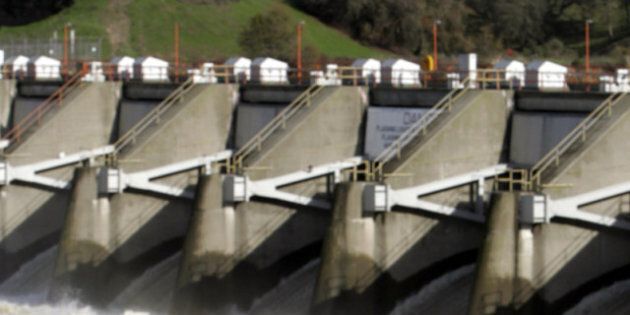
"The Yangtze River will run dry" because engineers have gone wild, building so many dams that their combined reservoir volume will exceed the Yangtze's flow, says "A Mighty River Runs Dry," a new study by geologist Fan Xiao of the Sichuan Geology and Mineral Bureau in China. Because there isn't enough water in the Yangtze to fill all the dams to their designed capacity, "an enormous waste of money" will result and the losses to China's economy, 40 per cent of which comes from agriculture, fishing, industry and shipping along the Yangtze, could be staggering.
"The fate of the Yangtze is sealed," Fan says, noting that the Yellow River, once known as the "cradle of Chinese civilization" met a similar demise. After the construction of more than 3,300 dams over 50 years, the Yellow River all but dried up. For nearly the entire year of 1997, no water at all flowed into the sea from the Yellow River. Despite this, 30 more giant dams are now being built on the mainstem of the Yellow, bringing the combined reservoir capacity to more than twice the average runoff of the river in a year.
Fan describes the chaotic dam building as a tragedy of the commons. State governments require local officials in jurisdictions along the Yangtze to meet economic growth targets. To spur development, the local governments hand out permits to power companies that allow them to build more dams. The various power companies, meanwhile, try to maximize their power revenues by withholding as much water as possible in their own reservoirs. "Each administers its affairs regardless of the overall interest," explains Fan, while everyone else -- power consumers and river users -- pay the price.
Though all the dams along the Yangtze and its tributaries are responsible for turning the once mighty river into a series of ponds, the most culpable is the Three Gorges Dam, the world's largest. After several failed attempts to fill its enormous reservoir, Three Gorges operators finally succeeded in filling it last October, to the sorrow of downstream areas which soon experienced rapidly plummeting water levels.
A study, commissioned by Probe International, explains this spring's unprecedented drought in the middle and lower reaches of the Yangtze. Shipping on the Yangtze came to a standstill, fish stocks died and, for perhaps the first time in memory, the usually water-rich Yangtze valley dried up, giving rise to the spectre of an African-like drought.
"Clearly, a serious conflict exists between water supply and demand along the Yangtze River valley," says Fan Xiao who foresees the demise of what is still called China's Golden Waterway.
The unchecked development of hydropower resources is like "draining the pond to catch the fish," he warns, resulting in a water crisis in rivers and valleys on the one hand, and a large waste of financial resources through the construction of crippled water projects on the other.
To read the full study, click here.
Patricia Adams is an economist and the executive director of Probe International, a Toronto-based think-tank. She is also the publisher of severalbooks on China's Three Gorges Dam.